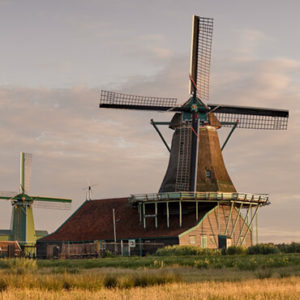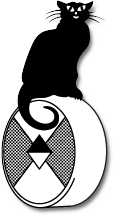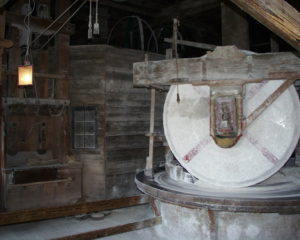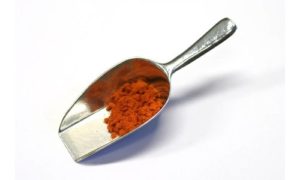Living By The Wind
Cathy Koos

Figure 1 De Kat Dye Mill, courtesy De Kat
Right before Covid hit, my sister Pat took a Rhine cruise. On her way home, her flight out of Amsterdam was cancelled due to weather. The airline put her up in a hotel for a couple of days and she set out to explore the area. On the map, she saw a number of functioning windmills including one named De Kat and away she went.
Tucked on a tight bend on the Zaan River in the Netherlands, sits De Kat (The Cat), the last remaining pigment windmill in Europe. This octagonal windmill has been catching the breezes since January 1646 when records tell us Adriaen Gerritsz van Someren applied to the government for a permit “to use the wind.”

Figure 2 De Kat Beldmerk
Once, more than one thousand windmills dotted Holland next to the River Zaan, grinding barley, rice, paper, wood, cooking oil, tobacco, snuff, and hemp. Now only thirteen windmills remain, as this wind-driven heritage was overtaken by steam and diesel engines that could run 24 hours a day, regardless of the capricious breeze.
January of 1646 saw an application for a “permit to use the wind” issued by the Dutch government to one Adriaen Gerritsz van Someren. Originally van Someren had built his windmill, De Kat, to grind oil. Shortly after a fire destroyed the windmill in 1782, it was refitted to grind chalk and pigments and De Kat became a verfmolen or pigment mill.
Volunteer millers study for several years and take a certificate to operate a national treasure like De Kat. Millers must study the weather, working parts of the mill and mill stones, understand the sails and be strong enough to turn the 15-ton cap…by hand. And speaking of those sails, they are made on site mainly by hand but also utilizing a 1920 Singer sewing machine. Sewn with No. 12 cotton canvas, a set of sails can take up to a year to sew. Once finished, the sailmakers themselves hold a party and hoist the sails. The sails in the Zaan river area are colorful with summer sails of orange and white, and winter sails of brown, ruby, and yellow ochre.
Pigment is a powder of small, insoluble highly tinted granules and require a binder. Examples are ochre, umber, lapis lazuli, malachite, and chalk. Dyes, on the other hand, are water soluble. Natural organic coloring materials include plants like madder and indigo, while animal sources include bone, sepia, and cochineal.

Figure 3 Mill Stone, De Kat
Increased demand for textiles in the 1600s created a thriving market for pigments. Tropical hardwoods such as Pernambuco and bluewood were imported on a large scale for dyeing fabrics and textiles. The wood was chopped into chips in a large vat, then pulverized by mill stones. Customers purchased the ground dye wood by the barrel.
As in the past, pigments and chalk are still ground in the Red Room of the mill whenever the winds are up. Between each pigment grinding, the entire room must be washed down to prevent cross contamination.
Earth minerals are also still processed in the formulary room, with pigments being made into oil paint, dye, watercolor, or egg tempura. Rich terracotta pigments from France and Italy produce umber, sienna, and ocher. Vegetable dyes are ground at the mill from seeds and roots, as well as tropical dye woods.

Figure 4 Brazil Wood, courtesy De Kat
When the winds get moving along the river in a force 4 breeze, whitecaps form and the windmill can go into full operation.
An onsite shop sells a wide variety of pigments ground at the mill, ranging from annatto to indigo to henna to logwood. The website offers recipes for egg tempura, acrylic, and watercolors, and even ox gall solution.
De Kat sees about 100,000 visitors a year. It is best to call ahead for opening hours.
There are several other museums nearby associated with the windmill industry:
Vereniging de Zaansche Molen and Molenmuseum and six others.
For more information:
https://www.zaanschemolen.nl/en/